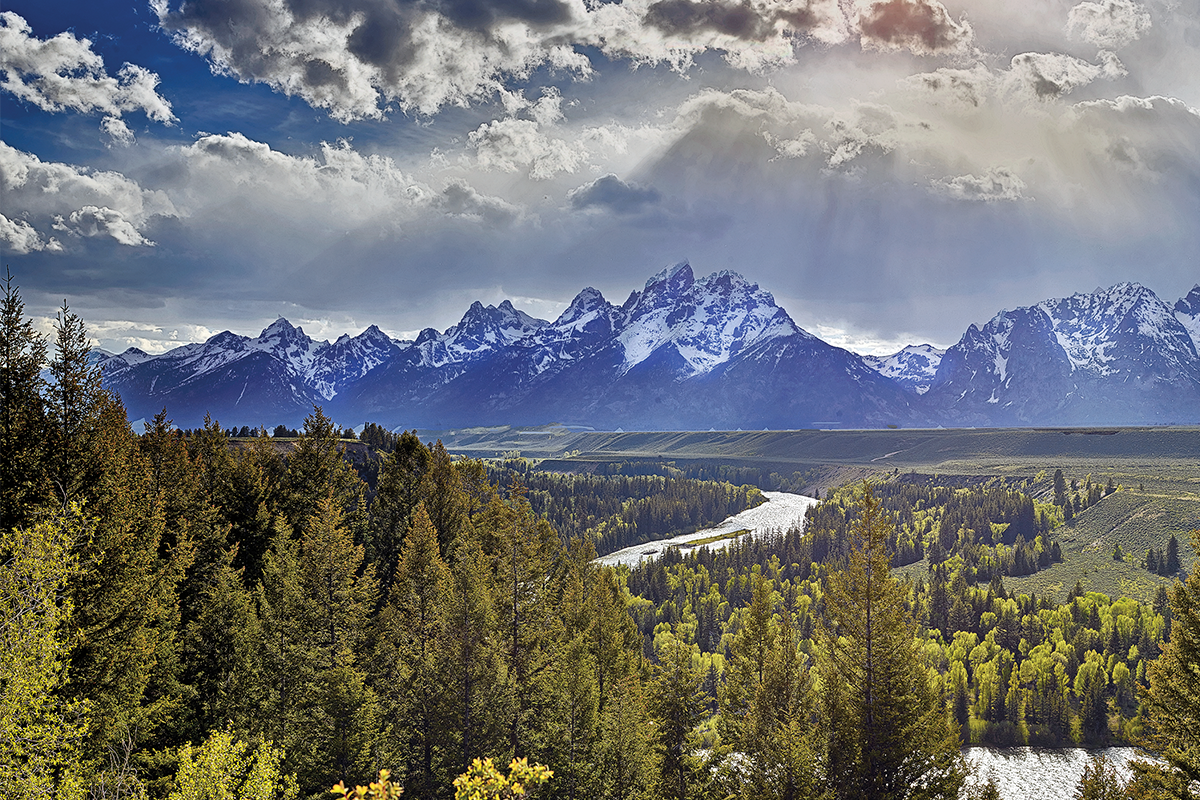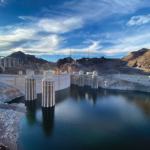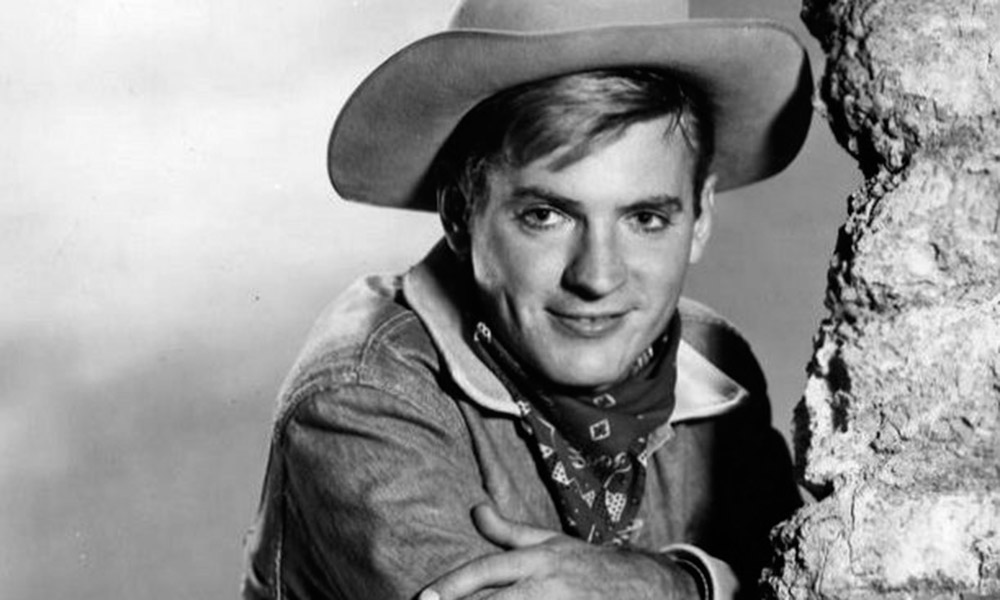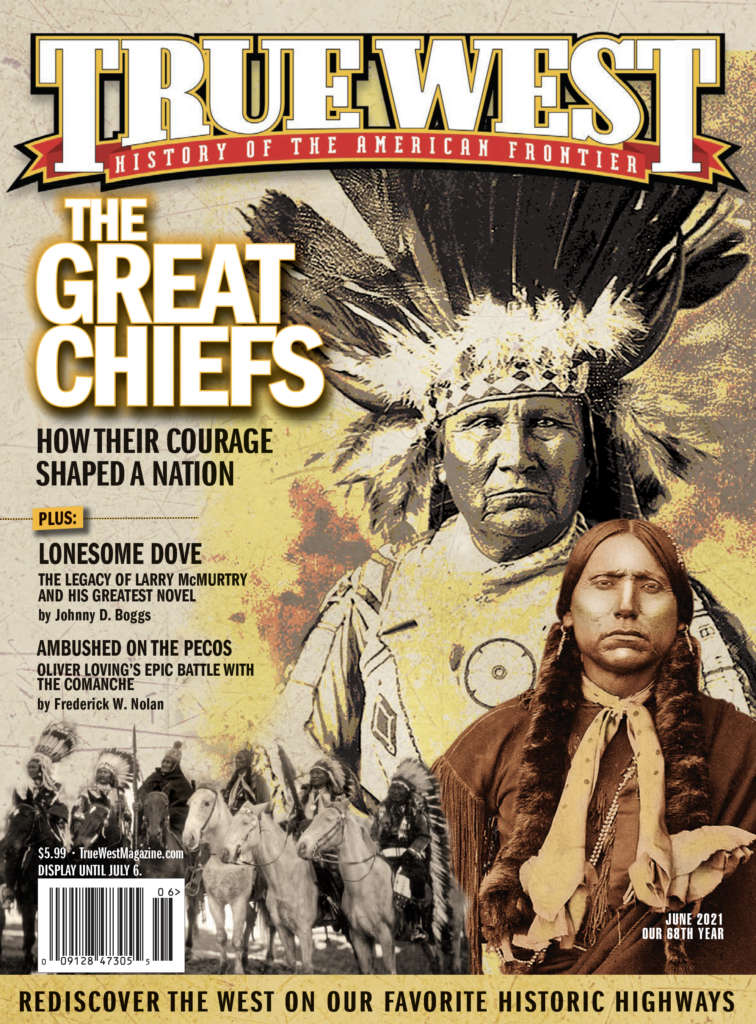The summer of 2021 is a great time to travel across these Old West highways.
The West is a grand place to travel, and its many highways and back-country roads are a great way to enjoy its natural wonders, monuments and parks, historic towns and destination getaways. Since last year’s national pandemic shutdown, our hospitality, museum and tourism travel partners across the West have been eagerly awaiting the return of travelers. We believe the summer of 2021 is a wonderful time to get back on the road and enjoy the scenic beauty, cultural heritage and welcoming communities of the Western United States.
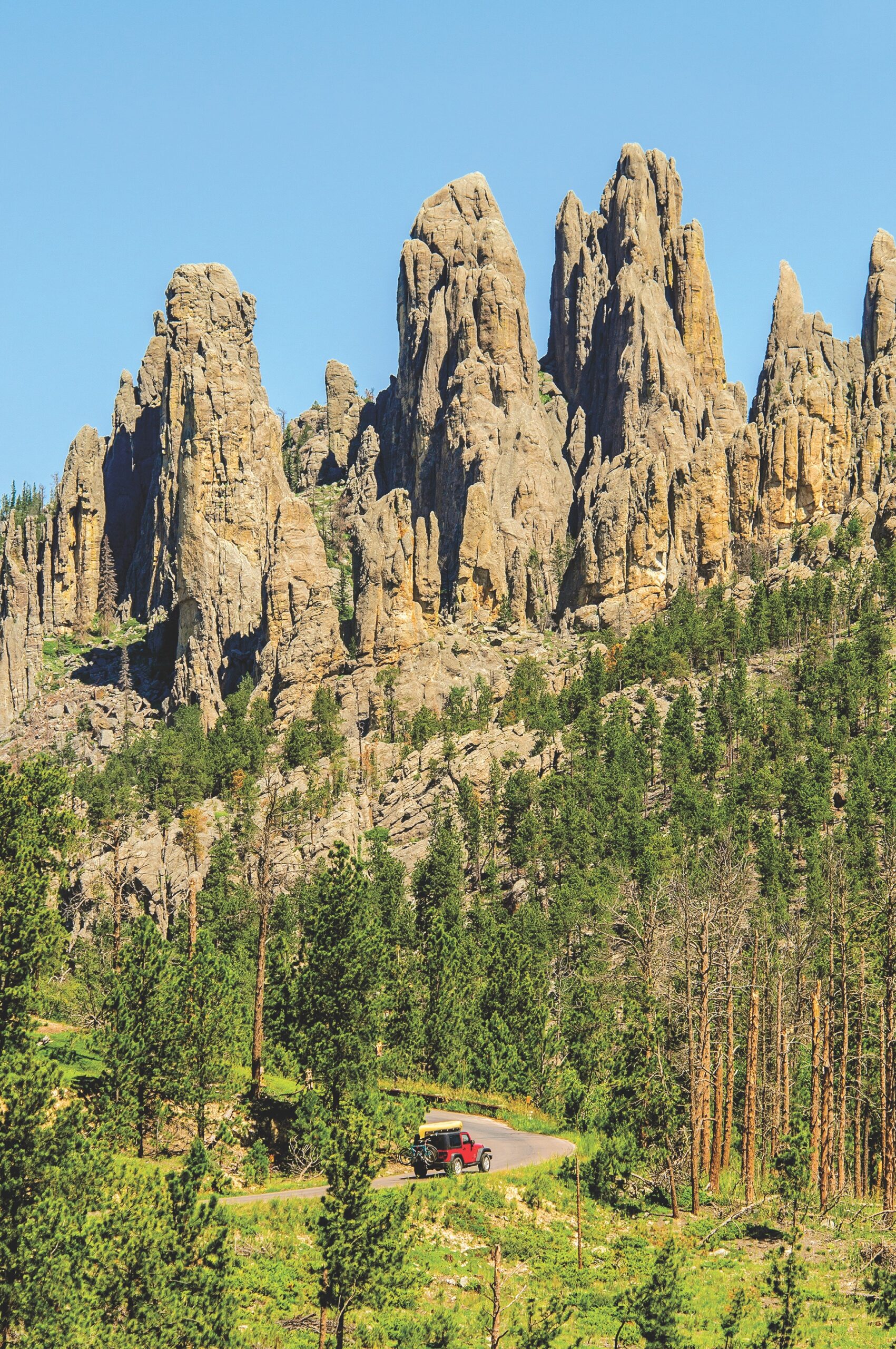
Photo by Chad Coppess, Courtesy South Dakota Dept. of Tourism
For our fourth annual scenic highways travel feature, True West’s editorial team offers eight highway adventures across Wyoming, Arizona, Oregon, Montana, North Dakota, Kansas, Oklahoma and South Dakota. We hope these travel itineraries will inspire readers to pack their bags and hit the road for immersive experiences along beautiful scenic highways, at wonderful museums, parks and historic sites and enjoying the pleasures of small-town hospitality and old-fashioned Main Streets across the West.
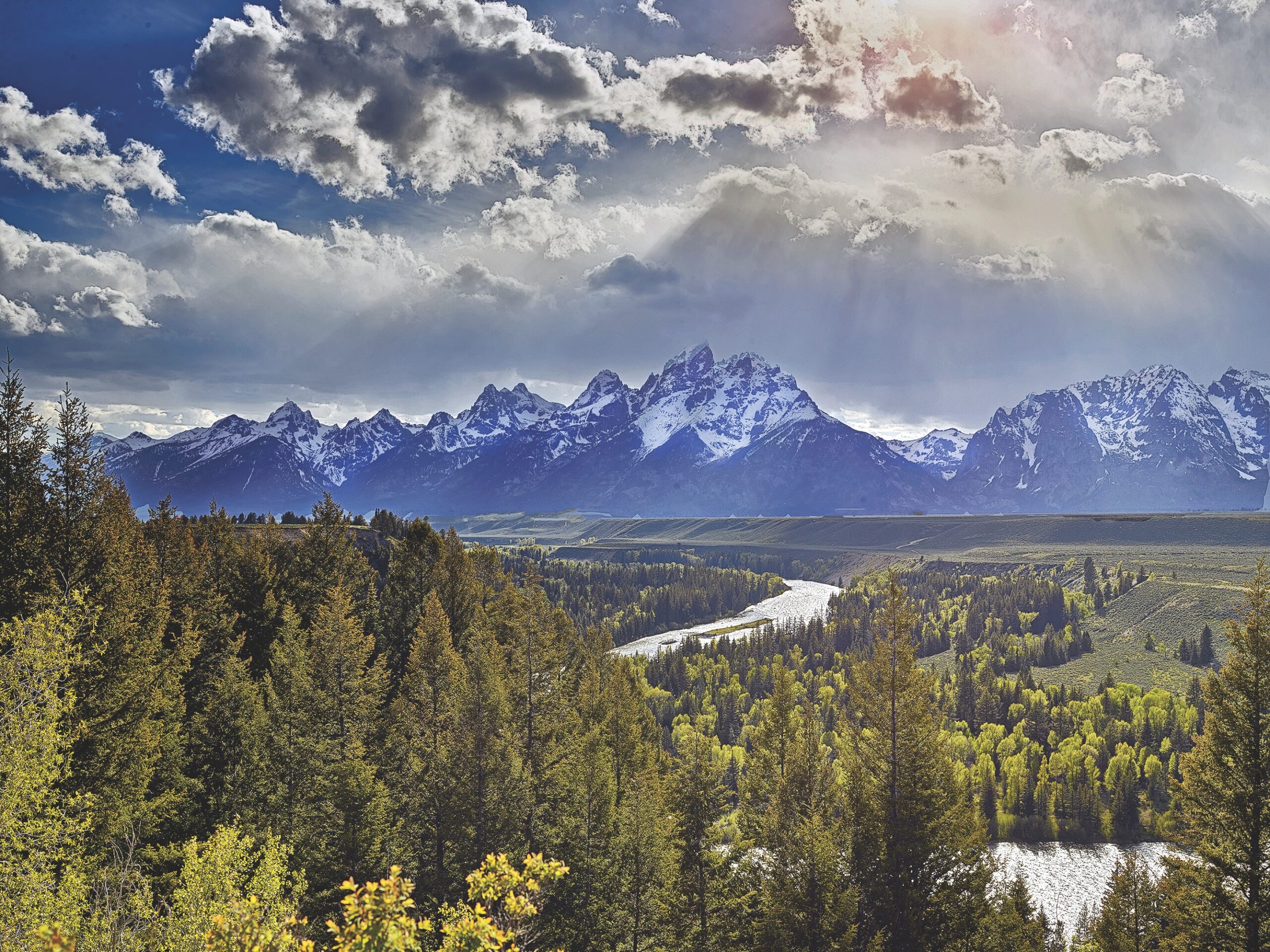
Wyoming Spirit of the West
Discover the Cowboy State on the scenic highways from Casper to Yellowstone and back.
Internationally, Wyoming is synonymous with the Wild West. From its historic towns such as Casper and Cody to its natural wonders such as Yellowstone and Grand Teton national parks, it offers visitors to the Cowboy State real Western pioneer and Indian culture, endless vistas of snowcapped mountains and scenic byways. Visitors to Wyoming who immerse themselves in the communities they tour quickly discover the state’s wonderful historic sites, museums, charming hotels and Western bars. Summertime also means fun-filled local celebrations with some of the West’s most prestigious rodeos and Western parades.
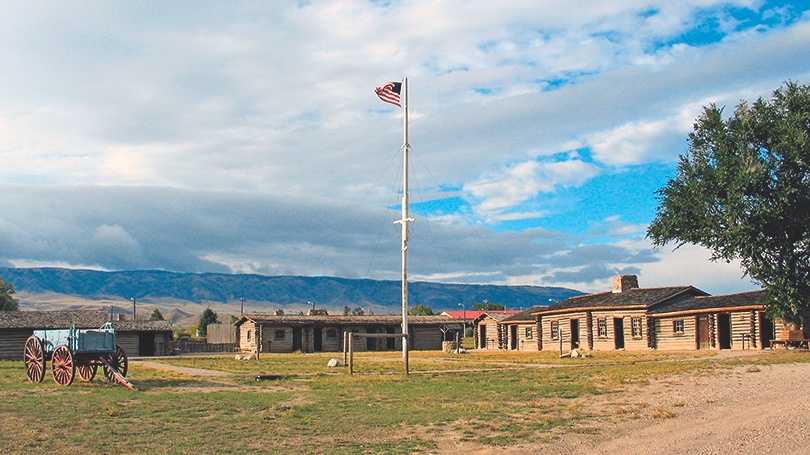
Travelers who start their Wyoming tour in Casper will receive a great introduction to the early history of the state at the Fort Caspar Museum and National Historic Trails Interpretive Center.
From Casper, start your loop tour of the Cowboy State on U.S. Highways 20, 26, 14, 191 and 287 on one of the most incredible set of highways to Yellowstone National Park and back.
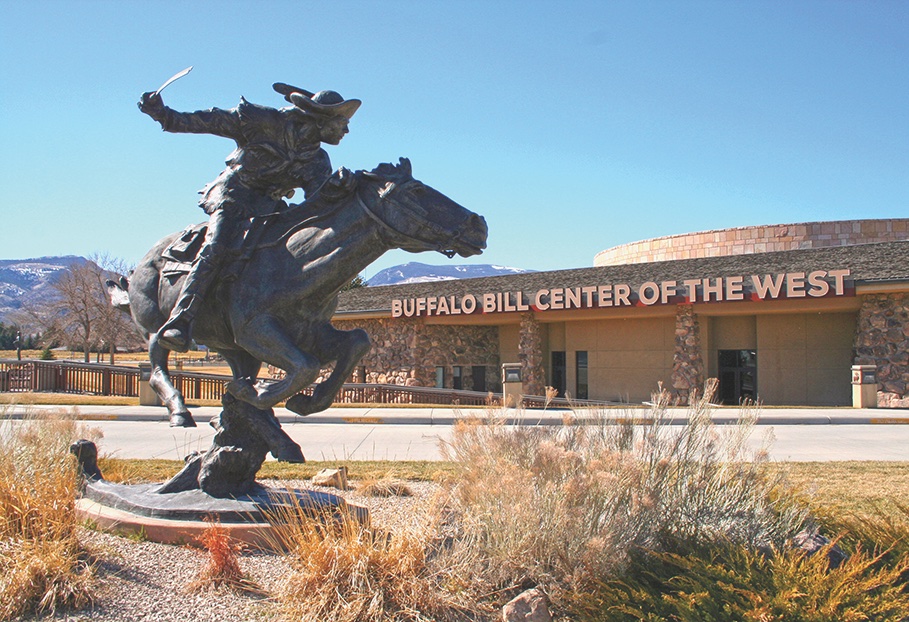
Bucket List:
Casper: Visitors have a broad choice of national hotel chains to use as their headquarters for a long weekend in Casper. Start your tour at the extraordinarily re-created 1865 Fort Caspar Museum on the North Platte River, and then make time to visit Independence Rock, St. Martin’s Cove, M.L. Bishop House, Salt Creek and Tate museums.
Thermopolis: Stay a night and soak in the famous hot springs at this historic crossroads of U.S. Highway 20 and State Highway 120.
Cody: Home to the Buffalo Bill Center of the West, a Smithsonian-style complex of five museums, the town is also home to Buffalo Bill’s Historic Irma Hotel. Book a room and relax for a long weekend of touring the local natural wonders and museums.
Moran: Known as the gateway to Grand Teton National Park, Moran was named after the famous Western artist Thomas Moran, who visited the region on the Hayden Survey in the 1870s.
Dubois: Immerse yourself in the Old West in downtown Dubois. Book a room at one of the town’s local hotels as your adventure headquarters for a short drive to Yellowstone and Grand Teton national parks.
Lander: In the heart of the Wind River Country, the historic city’s Museum of the American West is a great place to start a tour. Also, take time to visit nearby Fort Washakie, home of Sacajawea’s gravesite, and explore the region on the Circle the Continental Divide Driving Loop.
Riverton: The city earned its name from the four rivers that cross through it. Riverton borders the Wind River Indian Reservation, where you won’t want to miss the Wind River Heritage Center and the Riverton Museum.
Best Websites: TravelWyoming.com, NPS.gov
Arizona’s Historic North Country
From pines to cactus, from railroads to Route 66, northern Arizona has it all.
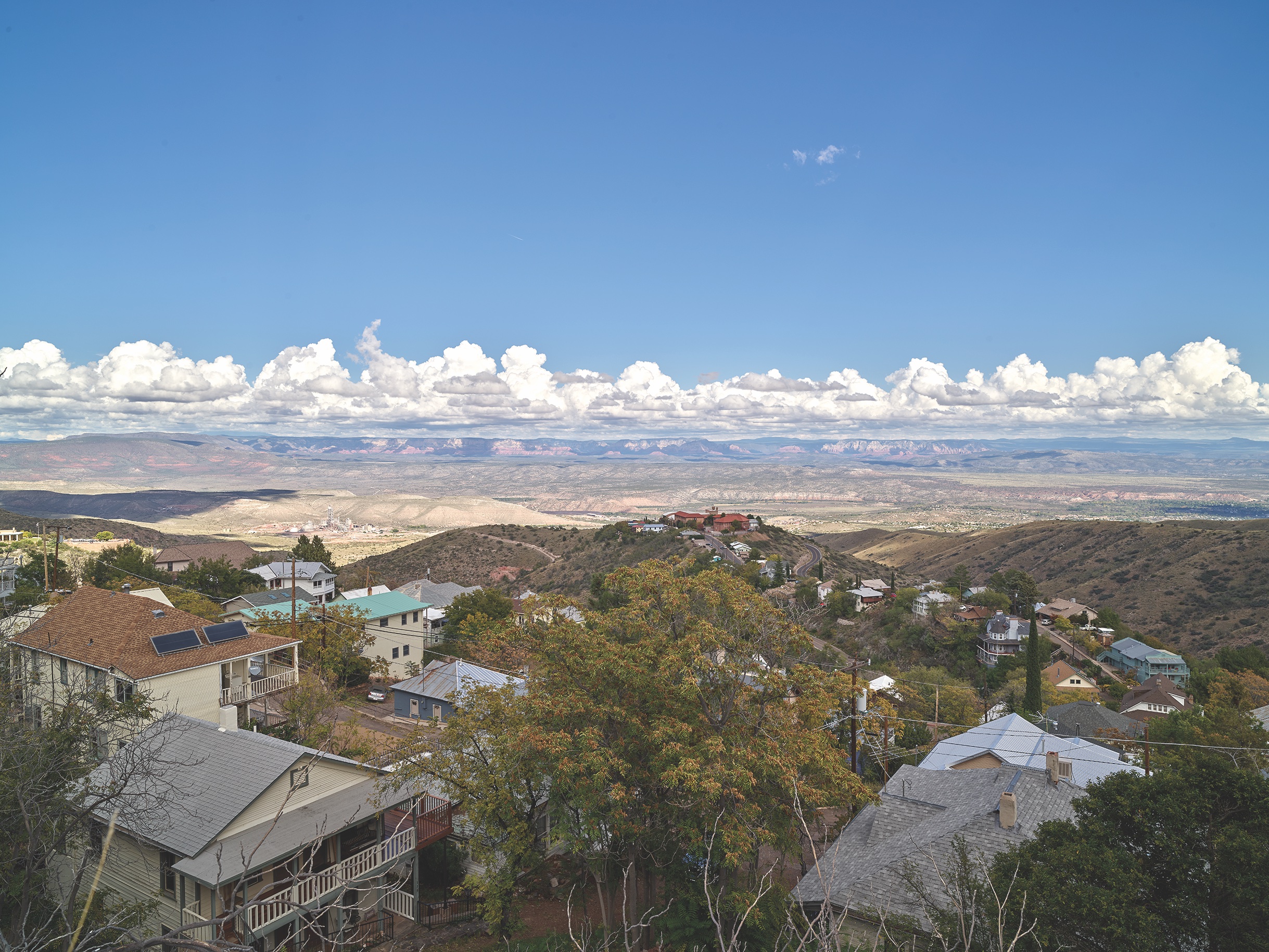
Travelers to the Grand Canyon State visiting for the first time or the 100th time will always discover something new along its beautiful byways and highways. The state’s vast distances, rugged terrain and world-renowned geography make it a great destination for auto tourists willing to put in the miles in search of adventure and history. Start or end your tour of northern Arizona in Prescott, the original Arizona Territorial capital, current Yavapai County seat and the state’s centerpiece of Western heritage.
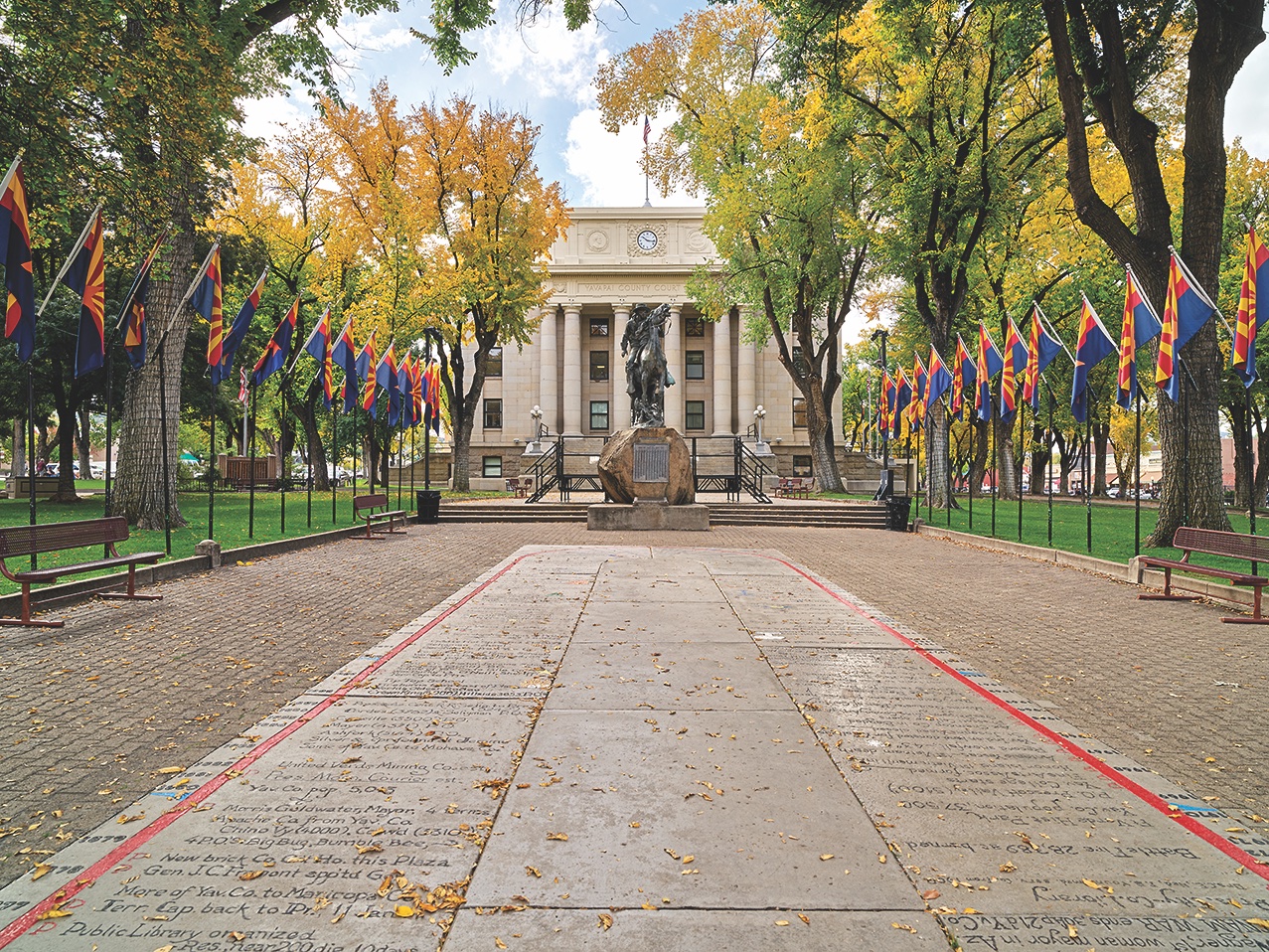
Summertime travel across the central highlands from Prescott to Flagstaff should be taken at a slower pace for two reasons: the scenic state routes, like 89A that switchbacks up and over the mountains through Jerome and Oak Creek Canyon, and the small towns to visit along the way. Once in Flagstaff, Interstate 40 is the main east-west route across northern Arizona, but with dozens of places to stop and enjoy along Old Route 66, travelers can set their own pace and relax along one of the most traveled highways in the country.
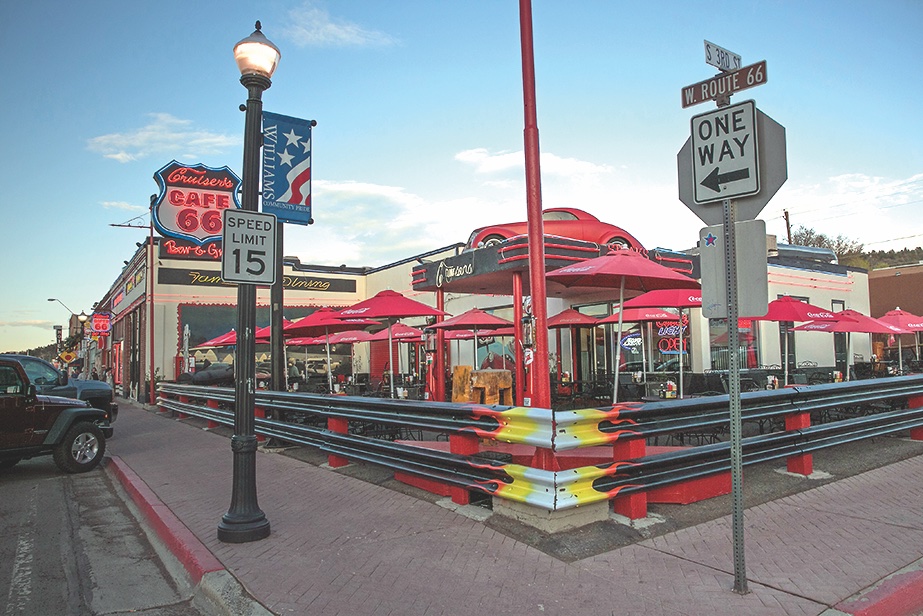
Bucket List:
Prescott: Experience this great city from which to start a tour of northern Arizona by booking a room at the historic Hassayampa Inn, within walking distance of the shopping district around the Courthouse Plaza, Whiskey Row, the Palace Restaurant and Saloon and Sharlot Hall Museum.
Jerome: A beautiful drive on State Route 89A from Prescott over Mingus Mountain leads to Jerome, one of the state’s most spectacularly located historic mining towns. Today its narrow streets are packed with art galleries, unique restaurants, hotels and inns.
Cottonwood: In the Verde Valley below Jerome, Cottonwood’s historic downtown should not be missed. Make time to visit Tuzigoot and Montezuma’s Castle national monuments, downtown Clarkdale and Fort Verde State Historic Park.
Sedona: In the heart of the state’s most beautiful Red Rock country, Sedona is an international destination. Drive 89A through Oak Creek Canyon to experience one of Arizona’s most beautiful scenic highways.
Flagstaff: The unofficial capital of northern Arizona, Flagstaff is home to Northern Arizona University, Museum of Northern Arizona, Lowell Observatory and the spectacular San Francisco Peaks.
Winslow: Route 66 fans visiting Flagstaff should take a drive east on I-40 to Winslow, following the old route of the Mother Road to the historic railway town, home to La Posada Hotel and the famous statue of Glenn Frey at Standing on the Corner Park.
Williams: The historic gateway to the Grand Canyon, Williams is a perfect place to enjoy a weekend along old Route 66 and take the Grand Canyon Railway to the South Rim and tour Bearizona, a unique wildlife park.
Seligman: West of Williams, exit I-40 at the Seligman exit and enter one of the great cities dedicated to the heritage of Route 66. Don’t miss a takeout meal at Delgadillo’s Sno-Cap Drive-In.
Peach Springs: When following historic Route 66 northwest from Seligman to Kingman, make time for at least an overnight at the Hualapai Lodge and tour Grand Canyon West on the Hualapai Indian Reservation.
Kingman: Start a tour of the Route 66 city, a historic crossroads of northwestern Arizona, at the Kingman Visitor Center to pick up directions and information on all of the city’s attractions, including the Mohave County Museum of History and Arts.
Best Websites: VisitArizona.com, NPS.gov
Oregon or Bust!
Follow the Pioneers on the Oregon Trail.
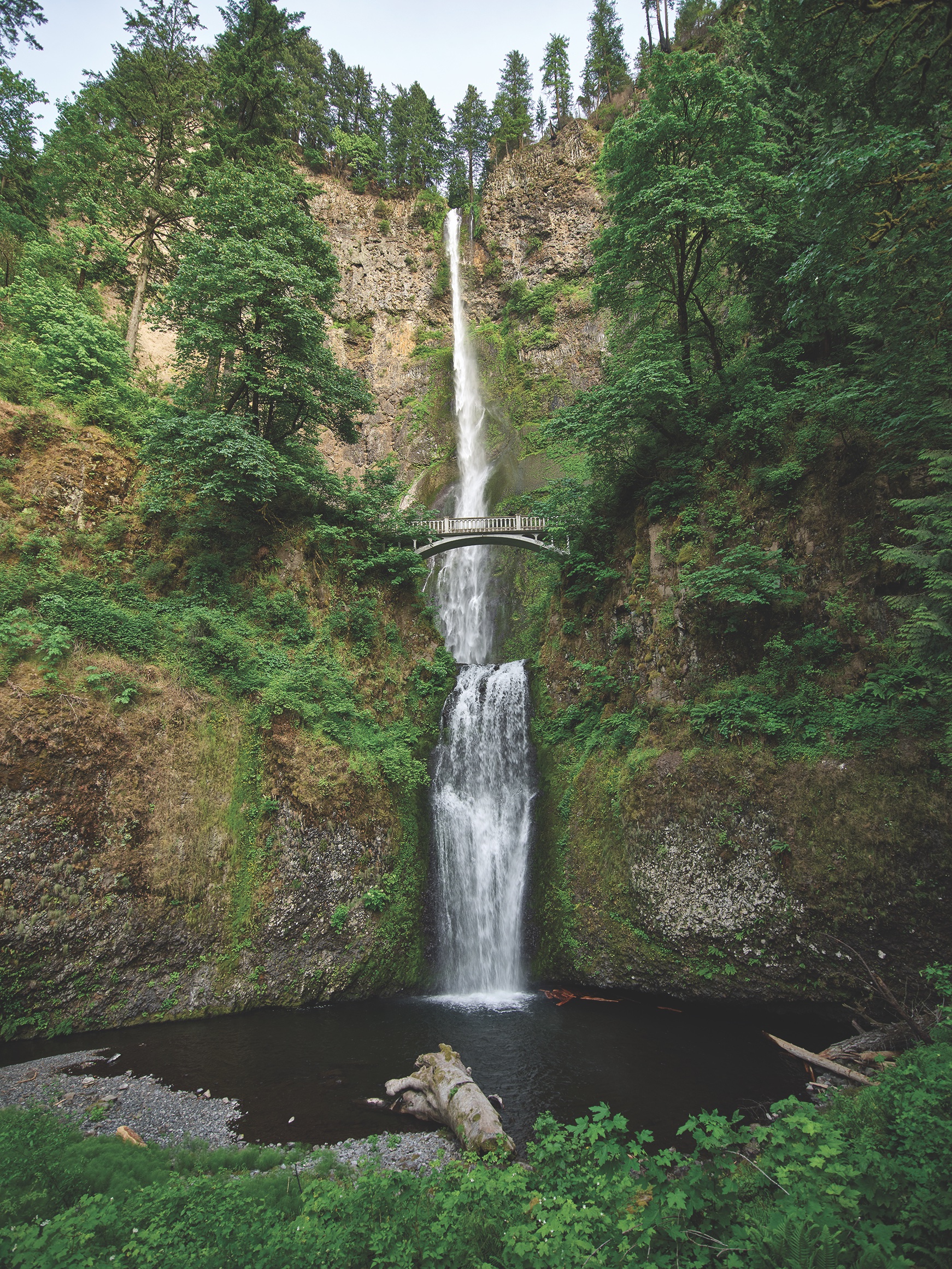
Bucket List:
Baker City: In this charming, historic Oregon Trail city visitors can relax downtown, enjoy the scenic beauty of the Powder River Valley and visit its wonderful museums, including the Baker Heritage Museum and National Historic Oregon Trail Interpretive Center.
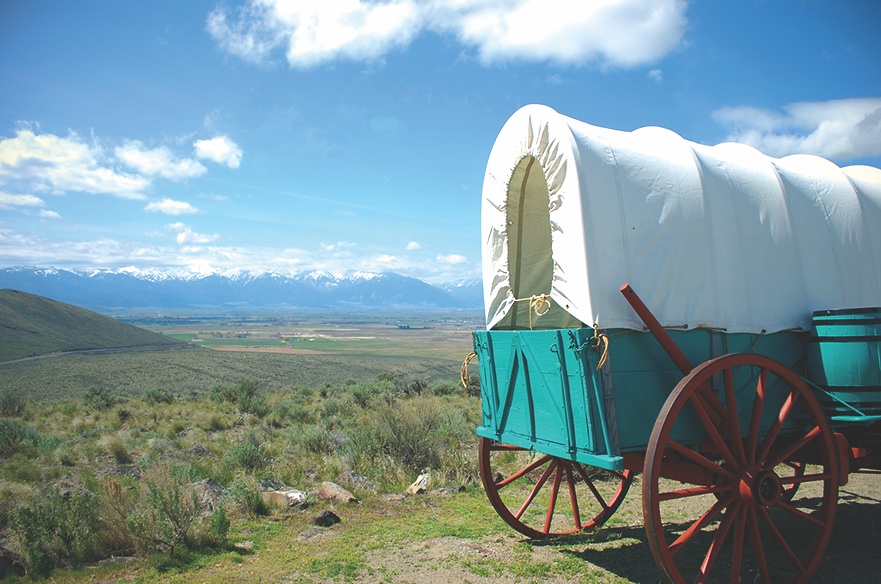
LaGrande: Book a room at The Lodge at Hot Lake Springs and enjoy the beauty of eastern Oregon; take a side trip to Joseph and visit the Chief Joseph Monument.
Pendleton: When visiting this Old West destination famous for the Pendleton Round-Up and its historic downtown, take the Pendleton Underground Tours and visit Hamley’s & Co., the famous saddle and Western wear shop, in business since 1883.
The Dalles: En route to The Dalles on I-84/U.S. 30 from Pendleton, take a detour at the Deschutes River State Recreation Area. When in town, book a hotel for a long weekend to enjoy the historic Oregon Trail city, Fort Dalles and the Columbia Gorge Discovery Center.
Hood River: At this wonderful destination city on the banks of the Columbia River, visitors enjoy the arts, food, wine, brew pubs and the scenic beauty of the foothills of Mount Hood. Don’t miss a ride on the Mount Hood Railroad.
Portland: Before arriving in the state’s largest city, exit I-84 onto the scenic slow route, U.S. 30/Historic Columbia River Highway. Don’t miss Multnomah Falls, Oregon’s tallest waterfall. When in Portland, be sure to tour the Oregon Historical Society and visit Powell’s Books before heading south to tour the capital city, Salem.
Oregon City: The Oregon Trail Interpretive Center in Oregon City is the official Western end point of the Oregon Trail.
Best Websites: TravelOregon.com, NPS.com
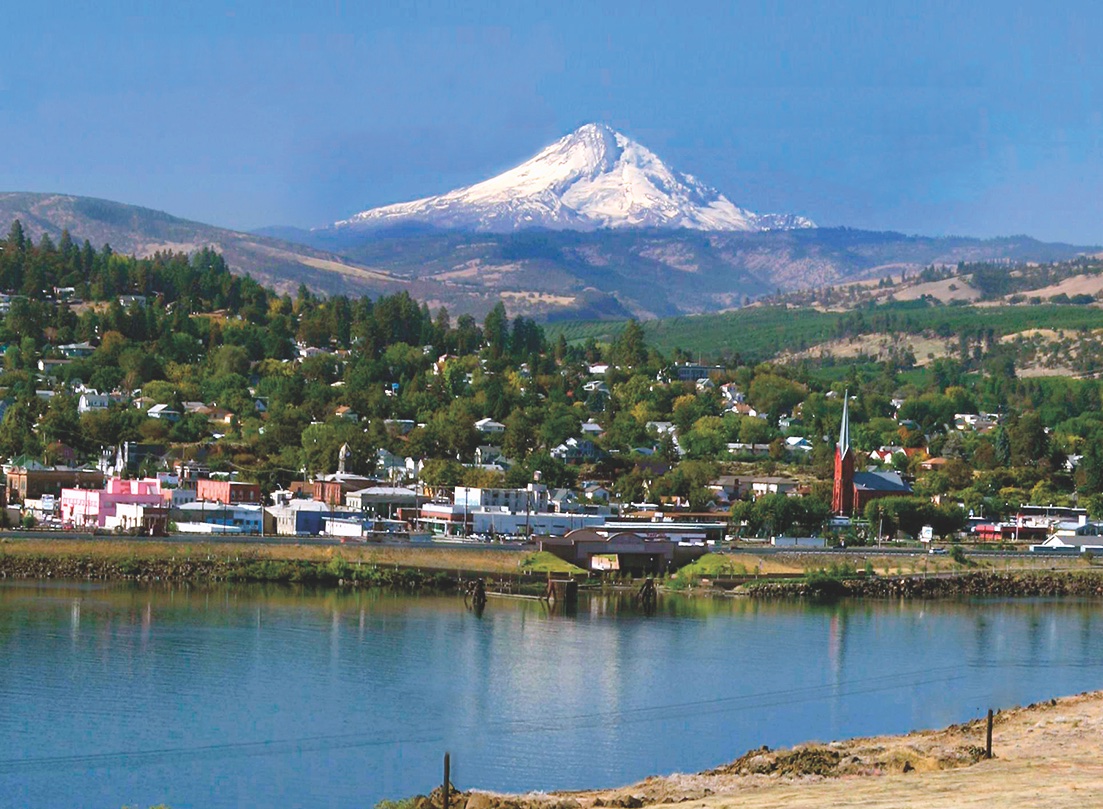
Oregon’s natural beauty, historic small towns and heritage sites are enhanced by its beautiful vistas and scenic highways. A great and interesting trip is to follow the Oregon National Historic Trail across the Beaver State.
The most direct way to start an Oregon Trail tour of the state is to enter from Idaho on Interstate 84, crossing the Snake River at Ontario, Oregon. (Oregon Trail fans might consider a month-long trip following the trail from Independence to Oregon City.)
Begin your Oregon Trail adventure with a long weekend in Baker City. Downtown has a wonderful historic hotel, the Geiser Grand, the perfect spot to stay while exploring the Powder River Valley. A full day should be scheduled at the National Historic Oregon Trail Interpretive Center, just outside of town on a bluff with 360-degree views of the valley and the surrounding mountains. While in Baker City, which has a rich emigrant, mining, ranching and Native peoples history, don’t miss a tour of the Baker Heritage Museum and the Leo Adler House Museum.
The Oregon National Historic Trail route will lead travelers across the state on interstates and U.S., state and local highways. Take your time and enjoy Oregon’s heritage and scenic beauty.
Montana’s Big Sky Country
Discover the beautiful state from the historic and mountainous West to the Southeastern plains and river country.
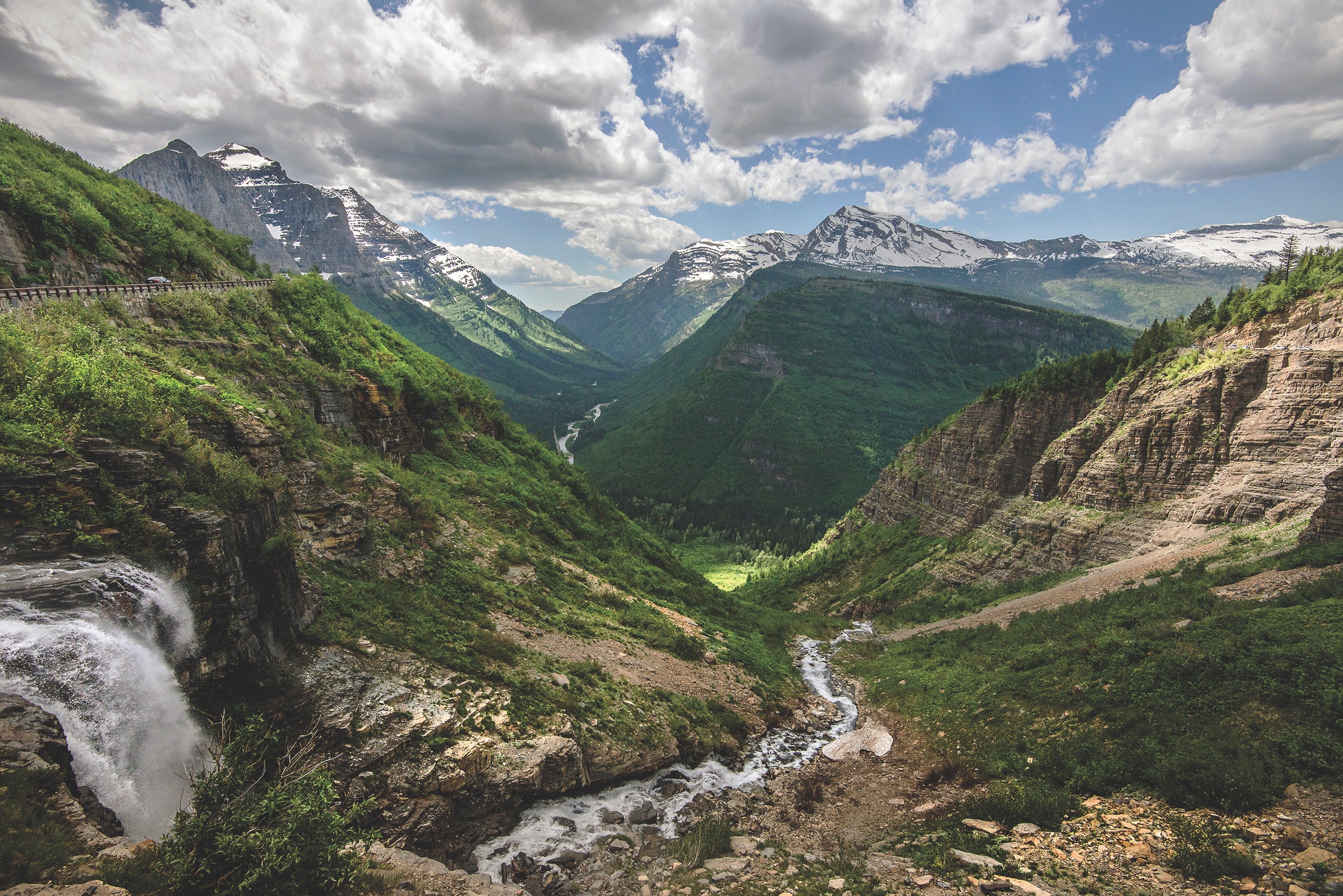
The Big Sky State has something for everyone—from the historic towns and peaks of southwestern and northwestern Montana to southeastern Montana’s plains and river country. A hallmark of Montana travel is the long beautiful drives across the nation’s fourth-largest state, with scenic byways in almost every direction leading off the state’s interstates, I-15, I-90 and I-94.
Bozeman is a great city to make as your first headquarters for a tour of Montana, especially if you are arriving in the state via Yellowstone National Park, but if you are coming from Sheridan, Wyoming, start in Garryowen and tour Little Bighorn Battlefield National Monument. Stay longer in southeastern Montana and enjoy a sojourn in historic Billings before heading West or follow the Yellowstone River east to Miles City, Glendive, Sidney and its confluence with the Missouri across the border in North Dakota.
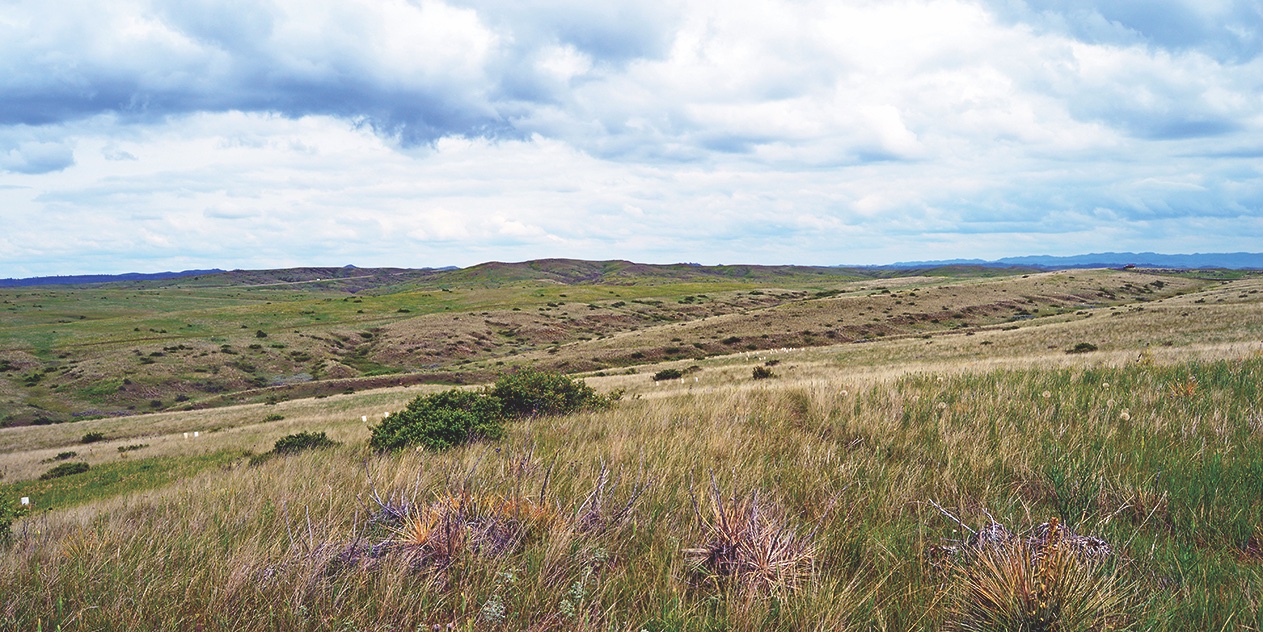
From Bozeman, the Montana visitor will quickly discover that southwestern and northwestern Montana offer a lifetime’s worth of adventure and historic sites to tour. A great loop leaves Bozeman and goes as far west as Wisdom, just outside Big Hole Battlefield National Monument, along scenic highways State 84, 287, 41, 278 and 43.
Driving northwest from Bozeman, visit Butte, the state capital of Helena and Great Falls. Continue north to Glacier National Park via Choteau on U.S. 89 and circle back through Kalispell and Missoula on U.S. 2 and 93. Either head south on U.S. 93 to Idaho or pick up I-90 back to Bozeman.
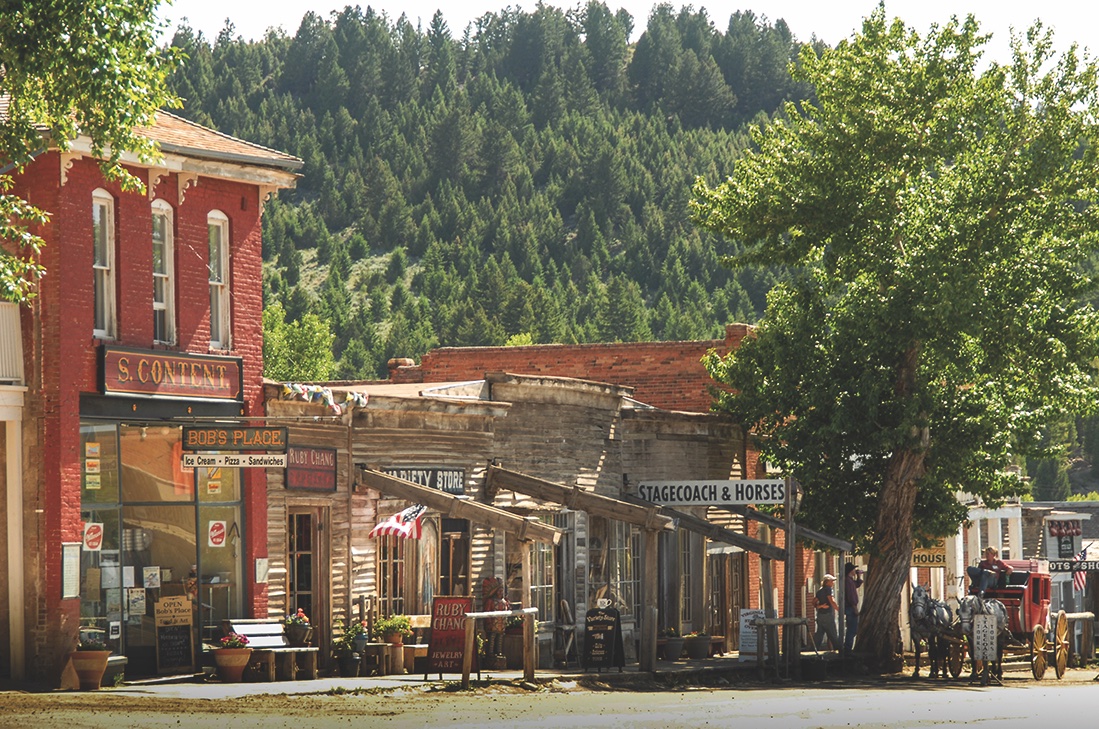
Bucket List:
Bozeman: Home to Montana State University, Bozeman has a great downtown entertainment district and plenty of lodging, making it a great headquarters for touring the western part of the state.
Ennis: Fly fisherman flock from around the world to fish the great trout waters of the Madison River.
Wisdom: This is the gateway town to Big Hole National Battlefield.
Virginia City: In the summer, book a room in the historic mining boomtown and immerse yourself in early Montana history.
Butte: The historic town played a major role in Western mining history. Don’t miss the World Museum of Mining.
Helena: The capital of Montana is home to the Montana Historical Society, a destination for historians from around the world writing and researching about the state and the West.
Missoula: The University of Montana is the centerpiece of Missoula.
Great Falls: Charles M. Russell called Great Falls home, and today the C.M. Russell Museum is one of the state’s premier art museums.
Whitefish: When on a tour of northwestern Montana, visitors who go to Glacier National Park will enjoy Whitefish, a resort town known for its hospitality, restaurants and lodging.
Kalispell: With its historic downtown, famous Conrad Mansion Museum and the Hockaday Museum of Art, this wonderful town offers visitors plenty to do.
Billings: The unofficial capital of southeastern Montana’s river and prairie country, Billings is a gateway city to Yellowstone and Little Bighorn Battlefield National Monument. Don’t miss a tour of the city’s Western Heritage Center.
Best Websites: VisitMT.com, NPS.com
Kansas’s Cowtowns AND Cattle Trails
Discover the Old West across the Sunflower State.
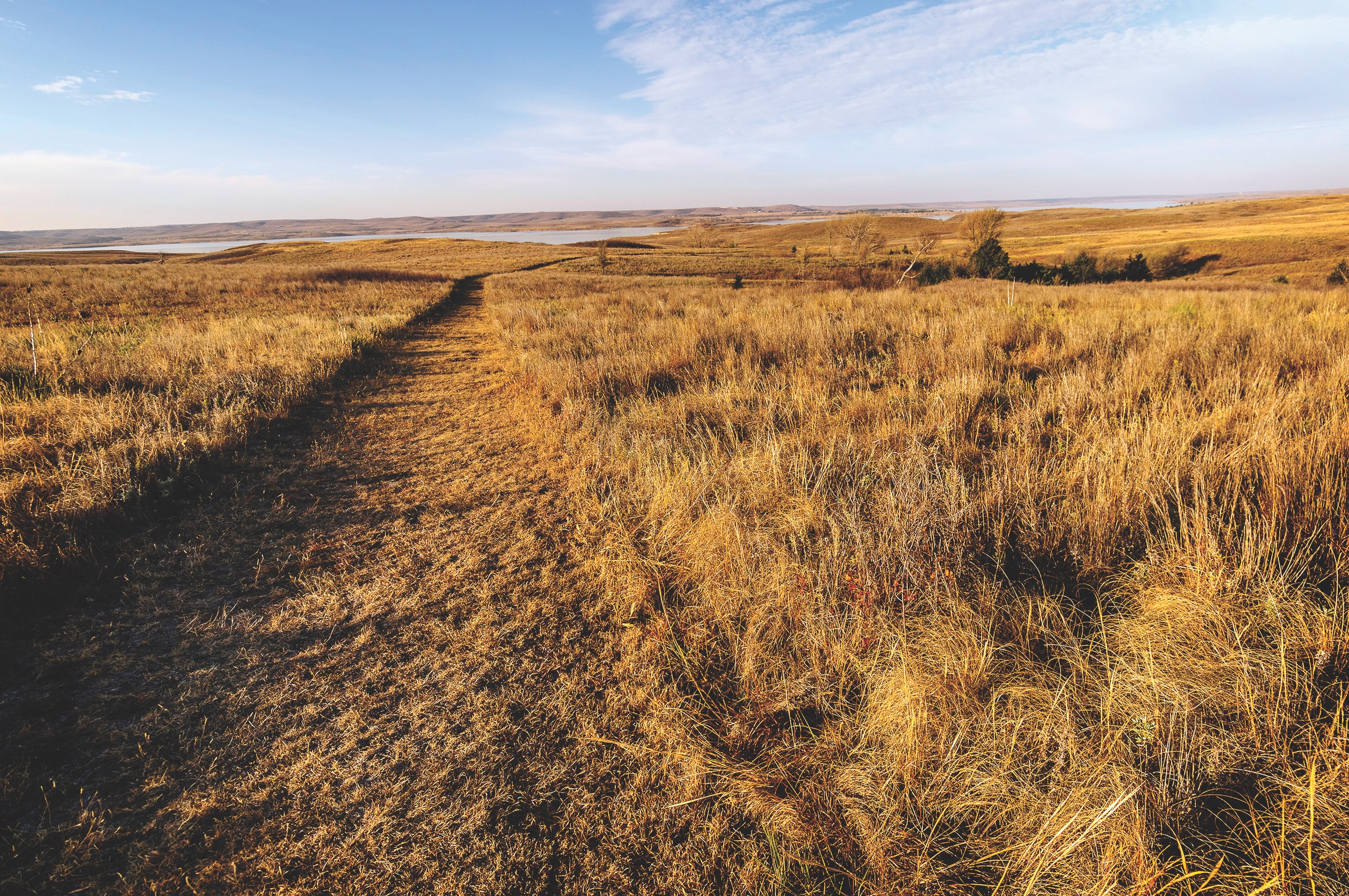
All Kansas Images Courtesy Kansas Tourism
Summertime across Kansas means local festivals, living history exhibitions, carnivals, rodeos and parades. Travelers can cross the Southern Plains state by paralleling the National Santa Fe Historic Trail and discover its rich cultural heritage. From American Indian culture to cattle drives, from railroad history to cavalry forts, the Old West is alive in the Sunflower State.
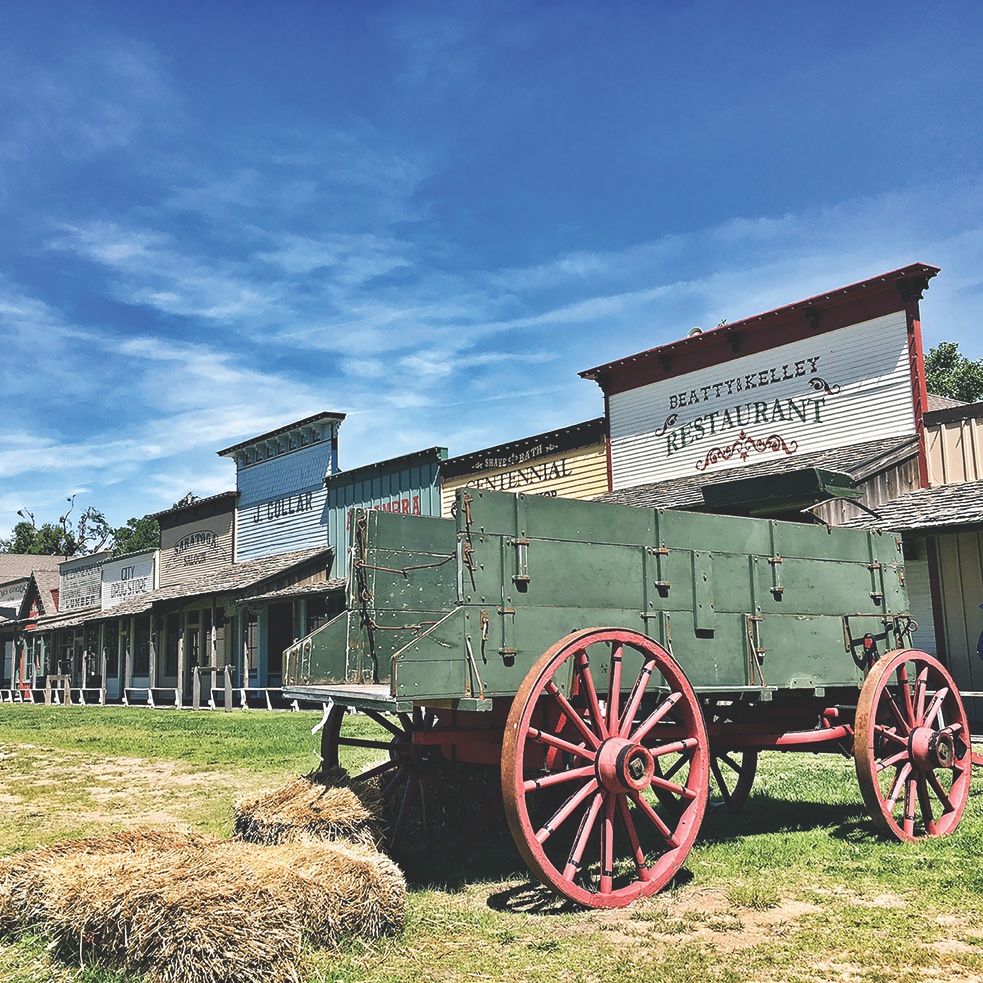
If crossing the state east to west, start a tour in Abilene; or when going west to east, start in Dodge City. Both were at one time the wildest and wickedest cattle towns in the Old West, and both are two of the best Western heritage centers in Kansas.
While many zip across Kansas on Interstate 70, I like to travel across the Sunflower State on its U.S., state and local highways. Get off the fast track and enjoy Kansas’s beautiful summers at a slower pace.
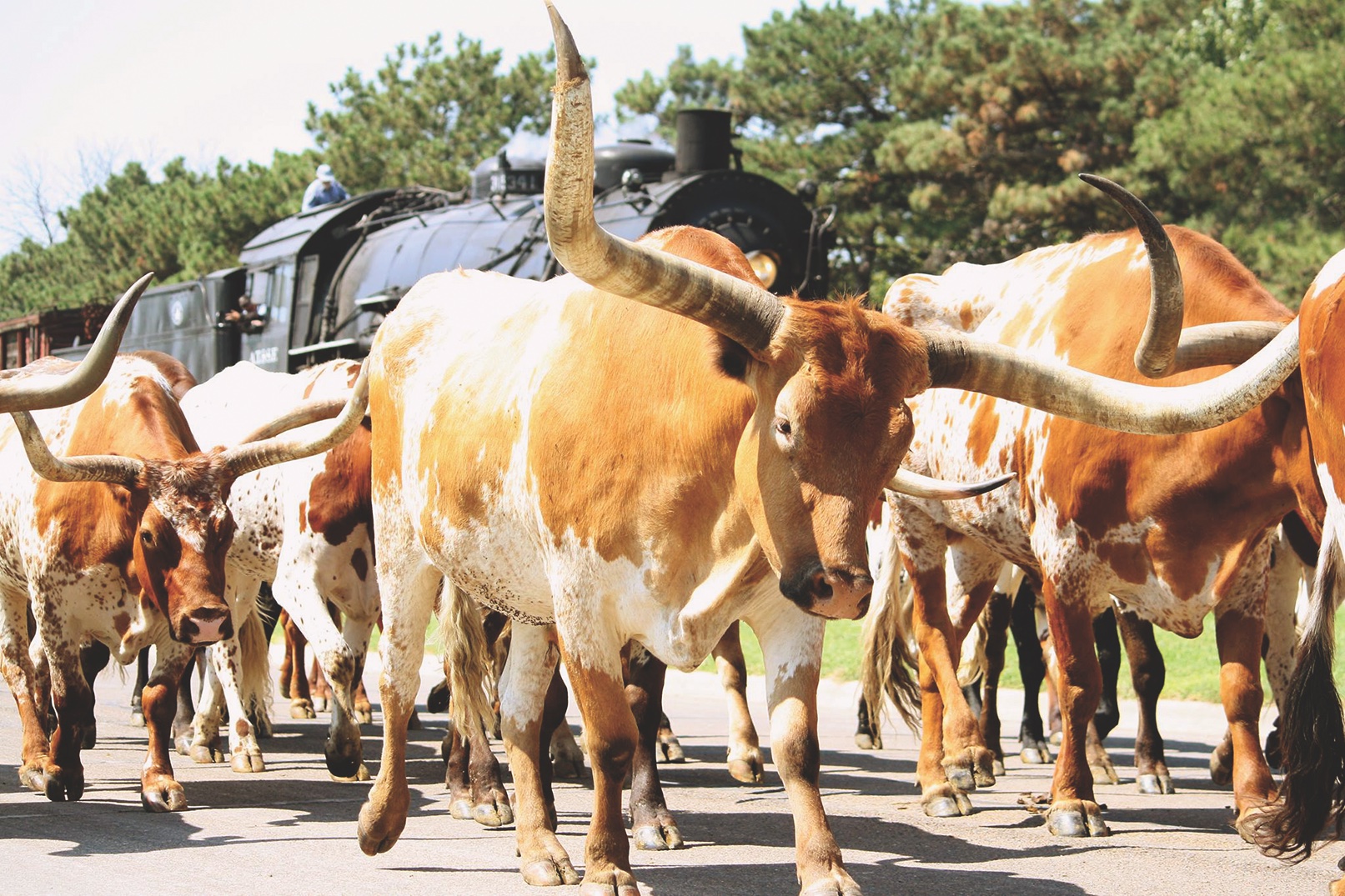
Bucket List:
Abilene: The first great railhead for Texas cattlemen coming up the Chisholm Trail, Abilene celebrates its Old West heritage at the Dickinson County History Museum and the living history center, Old Abilene Town. During the summer reserve a ride on the historic Abilene & Smoky Valley Railroad.
Salina: Take old U.S. 40 to Salina, parallel to the Old Santa Fe Trail. When in town, visit the Smoky Hill Museum to learn about local history.
Russell: Enjoy a stay at The Lodge at Russell while exploring the central Kansas city’s environs. Visit the Deines Cultural Center in the historic crossroads city, at the junction of Interstate 70 and Highway 281.
Ellsworth: Once one of the great Kansas cattle towns, Ellsworth’s railhead was a key destination for Texas cattlemen coming up the Chisholm Trail. Don’t miss a tour of the Hodgen House Museum Complex off State Route 14 and Fort Harker Museum, just east of the city.
Great Bend: This historic town was built along the famous curve of the Arkansas River on the Santa Fe National Historic Trail.
Larned: Fort Larned National Historic Site is the state’s best-preserved 19th-century frontier fort and is well-known for its summertime living history programs featuring rangers and docents in period dress.
Dodge City: From I-70, exit on U.S. Highway 50 and head southwest to Dodge City, paralleling the Santa Fe National Historic Trail. “The Queen of the Cowtowns” is a great place to stay for a long vacation and enjoy all the local historical attractions, including the acclaimed Boot Hill Museum.
Best Websites: TravelKS.com, NPS.gov
North Dakota’s Trailblazers
Discover the history of Lewis & Clark, Sacagawea & Teddy Roosevelt in the Great Plains state.
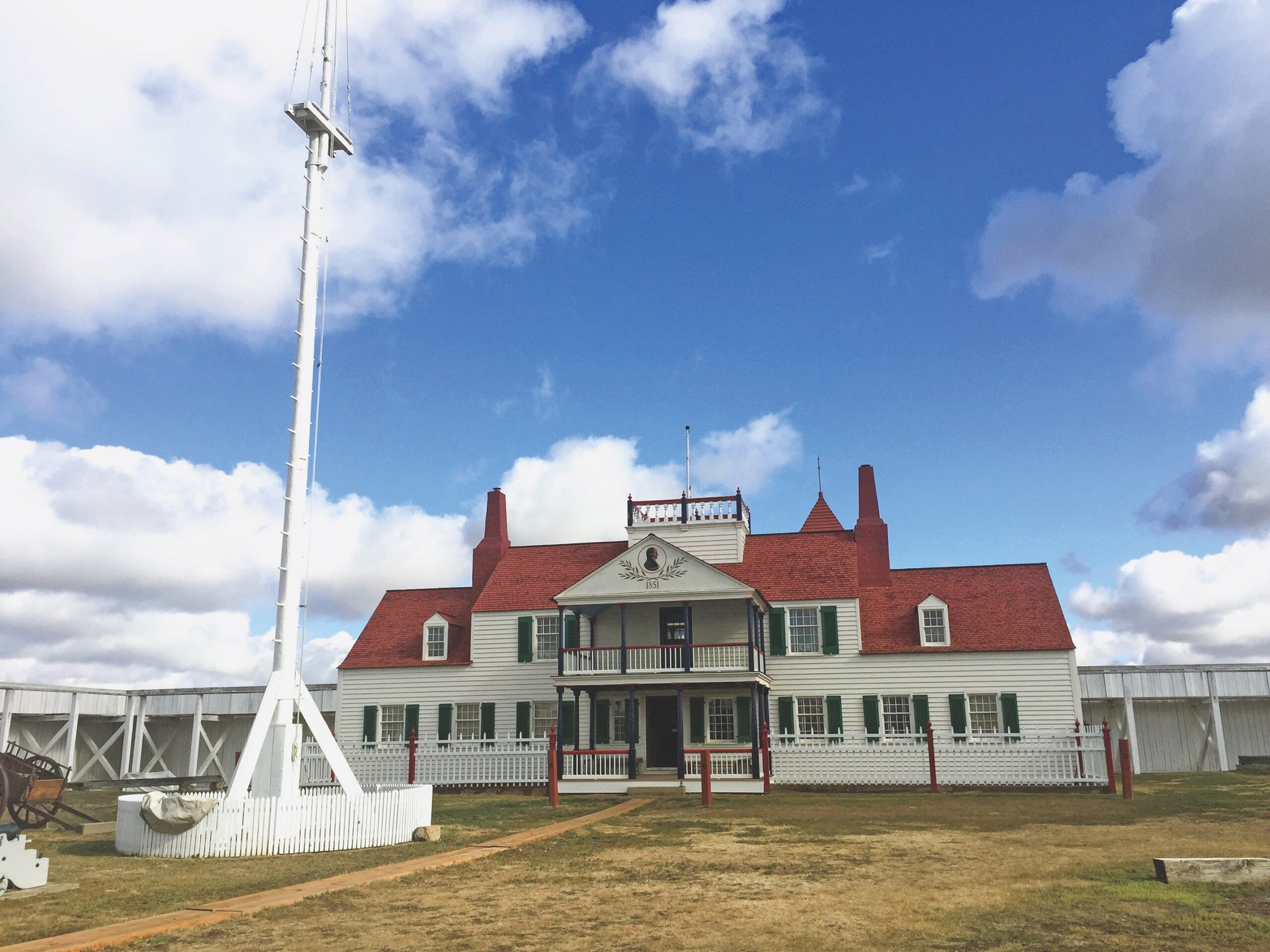
North Dakota is famous for its record-cold winters, and it is equally famous for its glorious Northern Plains summers that are perfect for travel and tourism, camping and fishing, wildlife viewing and starry nights. Travelers to the Peace Garden State will enjoy long, wide open vistas as they arrive in North Dakota from any direction and as they drive to the centrally located capital city of Bismarck.
Before hitting the road west to North Dakota’s Badlands and Upper Missouri River Country, prime yourself on the state’s history at Bismarck’s North Dakota Heritage Center and Mandan’s Fort Abraham Lincoln State Park.
When traveling in North Dakota, enjoy the state’s welcoming small towns, state parks and natural beauty. Interstate 94 is the primary route from Bismarck to Medora, but for the rest of the vacation, the route follows scenic U.S. highways.
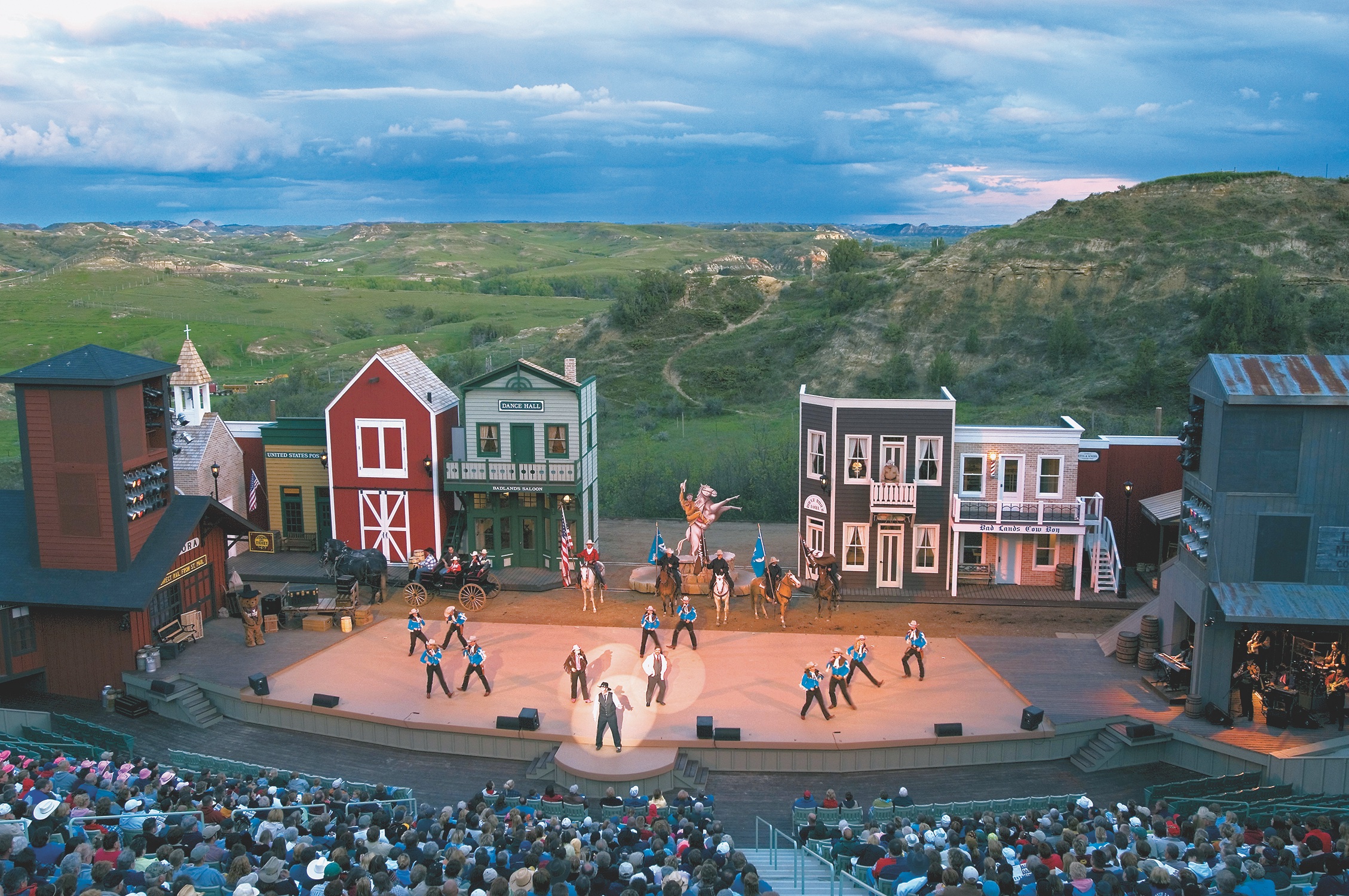
Bucket List:
Bismarck: Relax in the state’s capital city and tour the North Dakota Heritage Center, Theodore Roosevelt Rough Rider Hall of Fame, Lewis & Clark Riverboat and the United Tribes Cultural Arts and Interpretive Center.
Mandan: The state’s leading living history center is at Fort Abraham Lincoln State Park, which includes General Custer’s quarters, Cavalry Square, On-A-Slant Mandan Indian Village and Five Nations Arts Gallery.
Dickinson: Spend a weekend in the gateway city to North Dakota’s Badlands. West of Bismarck on Interstate 94, Dickinson is home to the Theodore Roosevelt Center at Dickinson State University, also enjoy a tour of the Dickinson Museum Center.
Medora: A centerpiece of summer tourism in the Peace Garden State, Medora is home to Theodore Roosevelt National Park, Pitchfork Fondue and the Medora Musical, North Dakota Cowboy Hall of Fame, Chateau de Mores, Billings County Museum and the Painted Canyon Visitor Center.
Watford City: Visitors to the North Unit of Theodore Roosevelt National Park take U.S. 85 north to the welcoming town of Watford City—a great place to stay and explore the area.
Williston: Just east of the Montana border off U.S. 85, the city is a destination site for followers of the Lewis & Clark National Historic Trail. Count on spending a couple of days touring Fort Union Trading Post National Historic Site, Fort Buford State Historic Site (site of the surrender of Sitting Bull) and the Missouri-Yellowstone Confluence Interpretive Center.
Minot: From Williston, U.S. Highways 85 and 2 lead to Minot, a crossroads of three scenic prairie highways, U.S. 2, 52 and 83. The North Dakota State Fair is held every July in Minot, which is also home to some of the state’s most popular Scandinavian festivals.
Lake Sakakawea/Garrison: The water wonderland of the state, the lake is 180 miles long and is touted for having a longer shoreline than the California coast.
Best Websites: NDTourism.com, NPS.gov
Oklahoma: Outlaws and Lawmen, Cavalry and Chiefs
Discover how the Sooner State’s territorial history helped define the Southern Plains.
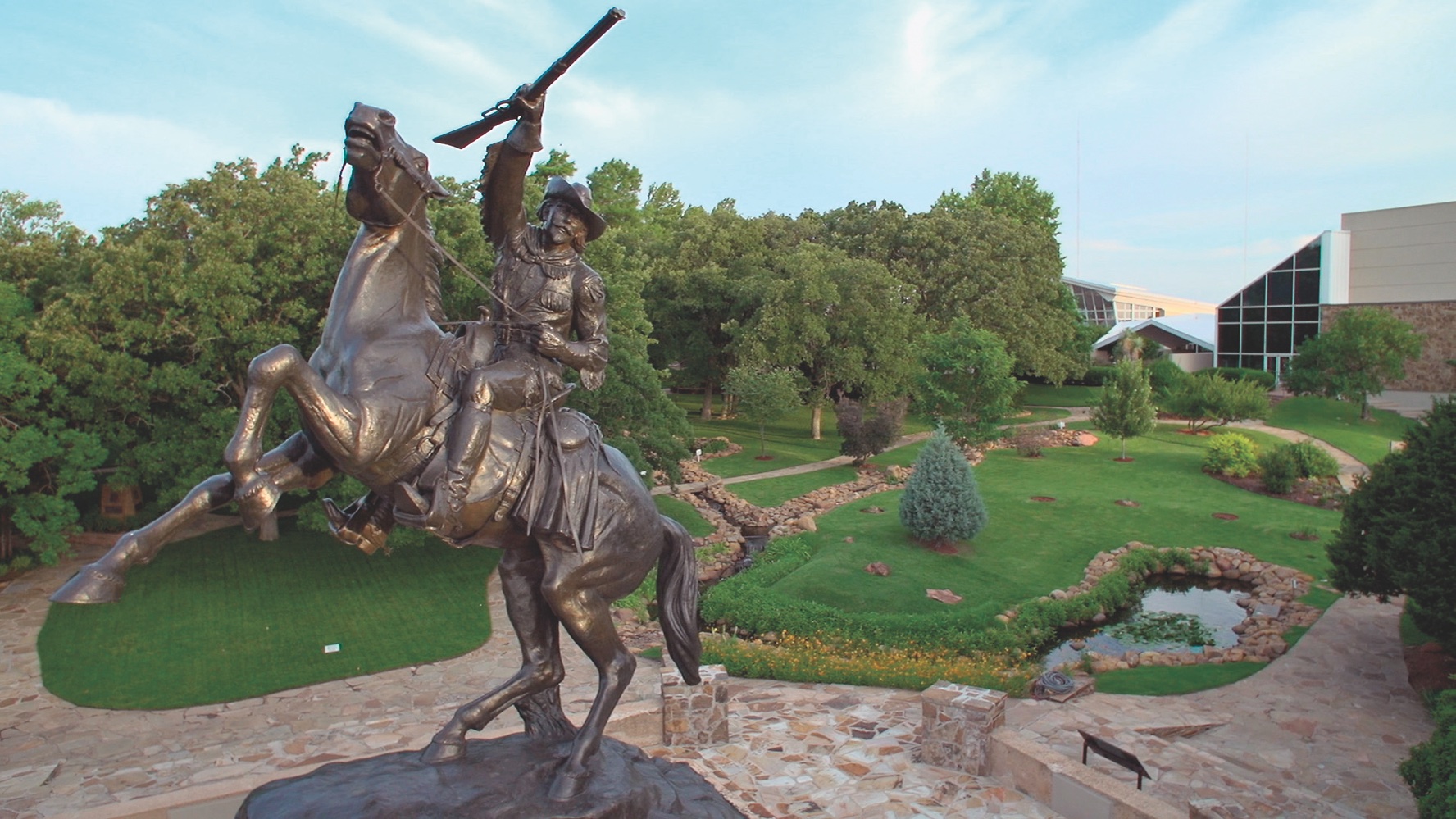
Courtesy National Cowboy Museum and Hall of Fame
Congress originally created Oklahoma as the Indian Territory. First, Eastern and Southern tribes were forcibly relocated and resettled in the Territory, followed by tribes from across the West after the Civil War. After much negotiation between the Eastern Oklahoma tribes and the settlers in the western half of the I.A., in 1890, the Oklahoma Territory was created. Seventeen years later, Oklahoma became the 46th state. Today, the Sooner State has one of the largest American Indian populations in the country. Visitors who would like to learn firsthand about Oklahoma’s Indian heritage and complex territorial and state history, should begin in the capital, Oklahoma City, and tour the city’s top museums: National Cowboy & Western Heritage Museum and Oklahoma History Center.
A visitor on the trail of the state’s Old West history will soon discover the hospitality and small-town charm that makes the Sooner State a favorite destination for Western travelers.
Bucket List:
Oklahoma City: The state capital is home to the National Cowboy & Western Heritage Museum, Oklahoma History Center and Oklahoma Hall of Fame. The state’s economic, cultural and political hub is a great place to start a week-long tour of the Sooner State.
Guthrie: The first capital of the Oklahoma Territory, Guthrie is due north of Oklahoma City. Exit off I-35 onto U.S. 77 and its historic downtown is at the crossroads of 77 and State Route 33. Stay a weekend and tour the country’s largest contiguous urban historic district, which includes the Oklahoma Territorial Museum and Carnegie Library.
Edmond: Founded as a Santa Fe Railway town, Edmond eventually was a crossroads for Route 66 and U.S. 77, which leads south to Oklahoma City. Take the Mother Road to Edmond and then stop and tour the local Edmond Historical Society Museum.
Duncan: Looking for the Old West in the Sooner State? Look no farther than the acclaimed Chisholm Trail Heritage Center north of the Red River along the historic Chisholm Trail. The city is located off U.S. Highway 81 southwest of Oklahoma City. The Chickasaw Nation is just east of Duncan.
Fort Sill: From Duncan, take U.S. 81 north to State Route 7 to Fort Sill, home to the Fort Sill National Historic Landmark and Museum. The interactive history facility boasts 38 buildings and curates over 235,000 objects at the 142-acre Historic Landmark.
Best Website: TravelOk.com, NPS.gov
South Dakota’s Black Hills
Discover the beauty and heritage of the Mount Rushmore State’s sacred mountains.
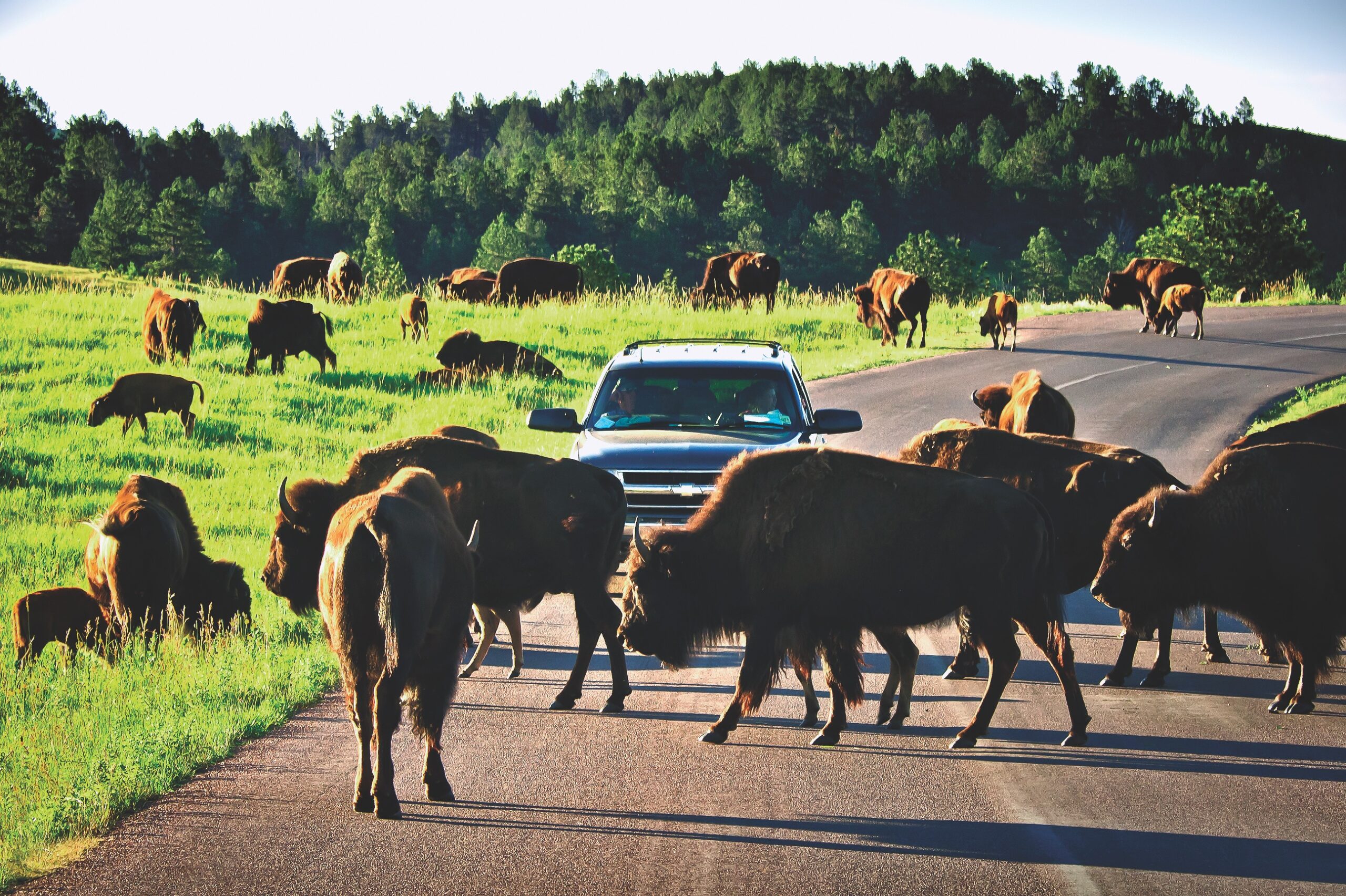
All South Dakota Images by Chad Coppess, Courtesy South Dakota Dept. of Tourism
Summertime is a glorious season during which to explore South Dakota, especially its Black Hills. From just south of Interstate 80 to the border of Nebraska, the mountain range rises from the Great Plains that can be seen for hundreds of miles in all directions. The landmark hills are a great place to immerse oneself in Western history with towns located north to south to make a summer headquarters for exploring the legendary mountains. If you love driving scenic highways, U.S. 85, 14A, 385, 16A and 18, and State Highways 36, 40, 44, 71, 87, 89 and 244 will be more than enough to handle while driving the hills. Make sure to have maps and GPS, as driving the Black Hills can be a bit daunting, and it’s easy to miss road signs and end up going in circles (I know, I’ve done it.).
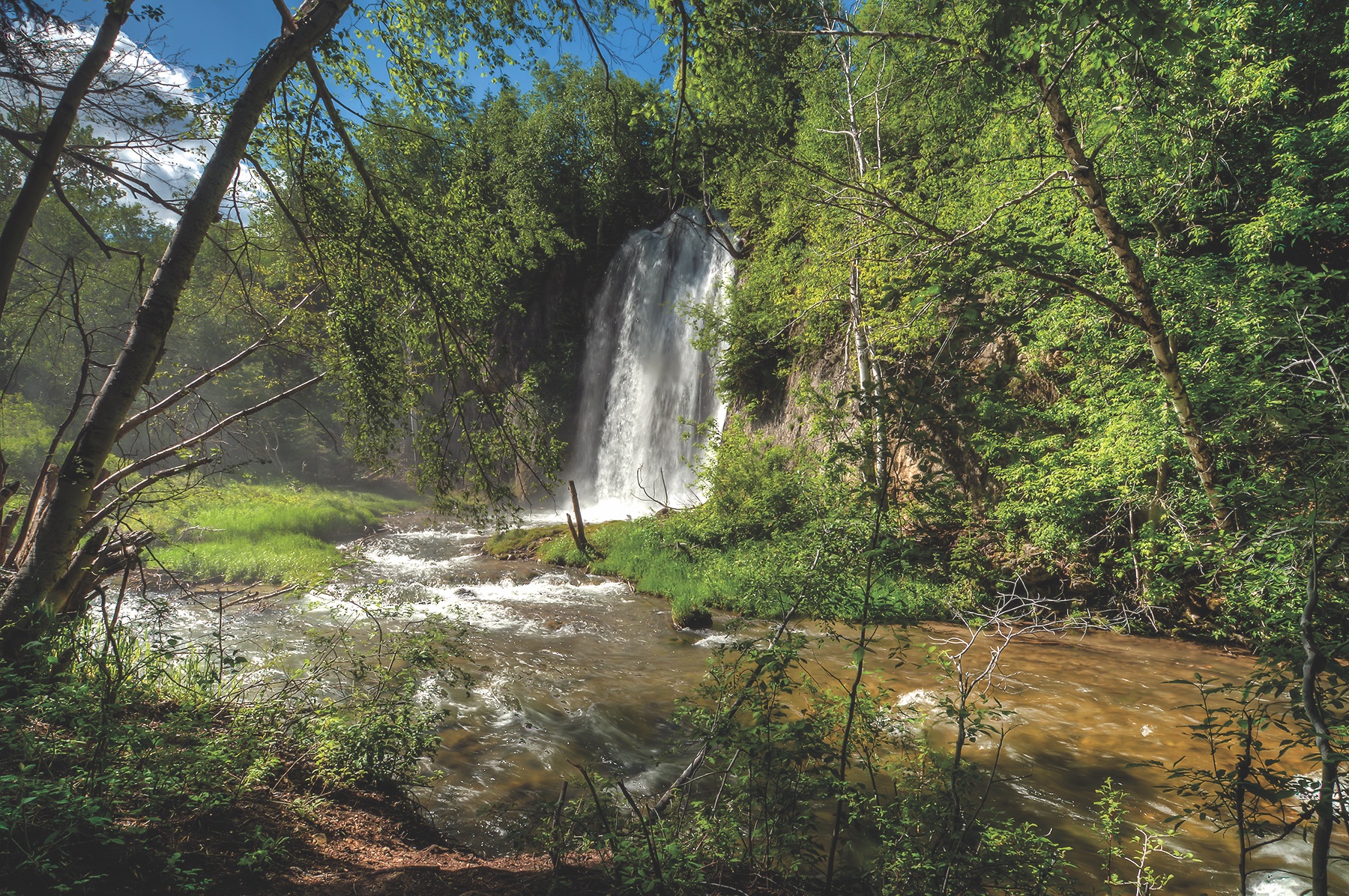
For the traveler who wants to cut down travel time in visiting the Black Hills, splitting two weeks between the North and South Hills would be ideal. Encamp in or outside of Deadwood or Lead in the north, and in Custer to the south. While in the North, visit Spearfish, Spearfish Canyon, Belle Fourche, Sturgis and Rapid City and all they have to offer. In the South, stay at Custer State Park and tour Hills, Keystone and Hot Springs, plus the Crazy Horse Monument, Mount Rushmore National Memorial and Wind Cave National Park.
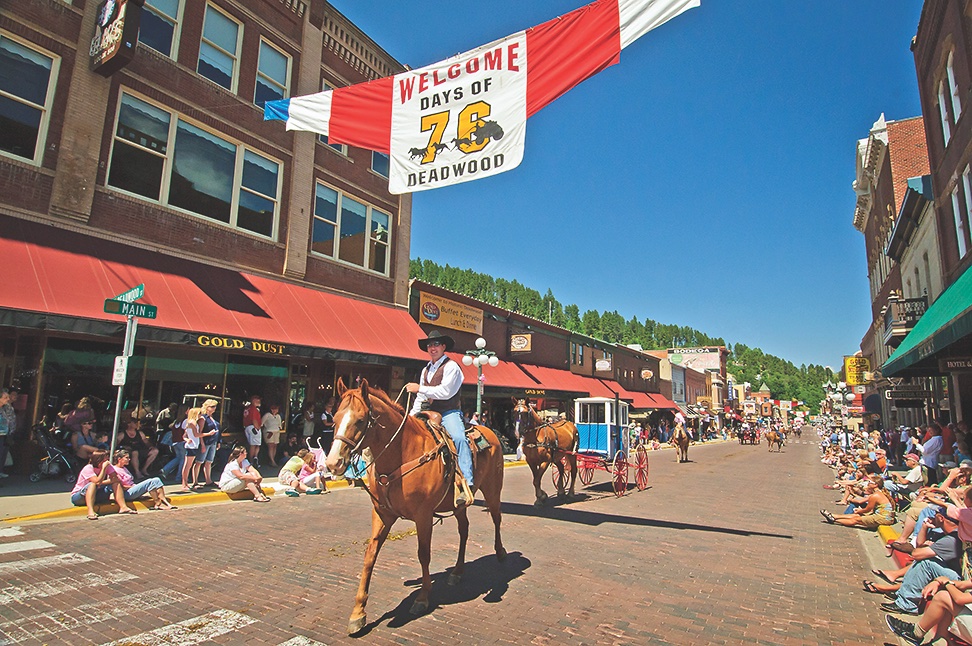
Bucket List:
Deadwood: Make the historic Bullock Hotel your headquarters in Deadwood for touring the North Hills. Enjoy walking the historic streets of downtown—made famous by Seth Bullock, Wild Bill Hickok and Calamity Jane—as well as visiting the city’s many museums, including the Adams and Days of ‘76.
Lead: Looking for a little less crowded atmosphere than Deadwood, but still in a historic city in the North Hills? Try Lead, just south on U.S. 85 from the famous boomtown. Enjoy downtown and its Black Hills Mining Museum adjacent to the Homestake Mine.
Rapid City: The largest city in the Black Hills region, Rapid City is a wonderful place to stay to explore the hills and the surrounding area. Don’t miss the world-class Journey Museum and Learning Center. A great side trip is State Highway 44 to Badlands National Park.
Spearfish: North of Deadwood on U.S. 85 and I-90, the ranching and farming community of Spearfish has one of the best museums in the area, High Plains Western Heritage Center. When returning to Deadwood, take the long way on U.S. 14A up Spearfish Canyon to experience one of the most beautiful scenic highways (take your time) in the Black Hills.
Sturgis: In 1878, Fort Meade was founded near Sturgis, a supply town for the mining camps of the Black Hills. Sturgis is now internationally renowned for the annual Sturgis Motorcycle Rally.
Belle Fourche: North of Spearfish, Belle Fourche is the geographic center of the United States. Seth Bullock was one of the founders of the ranching community, anticipating the need for a railhead in the area. The Tri-State Museum expertly tells the local history.
Keystone: The closest town to Mount Rushmore, Keystone has a vibrant downtown hotel and entertainment district, which comes alive in the summer. It is very close to the Peter Norbeck Scenic Byway and Needles Highway, two of the most beautiful drives in the Black Hills area.
Hill City: Strategically located on the northwest side of the South Hills, Hill City offers an entertainment and hotel district as a welcoming respite from touring the nearby monuments and scenic roads. Enjoy a ride on the Black Hills 1880 Central Railroad Train.
Custer: A gateway city to the South Hills, the quintessential Black Hills town is a great place to stay while touring the scenic region and the Crazy Horse Memorial. A popular destination is scenic Custer State Park, 14 miles east on U.S. 16A.
Hot Springs: The southernmost community in the Black Hills, Hot Springs is true to its name and famous for its soothing waters which have drawn traveler and tourists for well over a century. North of Hot Springs, take the Custer Scenic Byway from the junction of state highway 87 and U.S. 385 near Wind Cave National Park to Sylvan Lake.
Best Websites: TravelSD.com, NPS.gov

